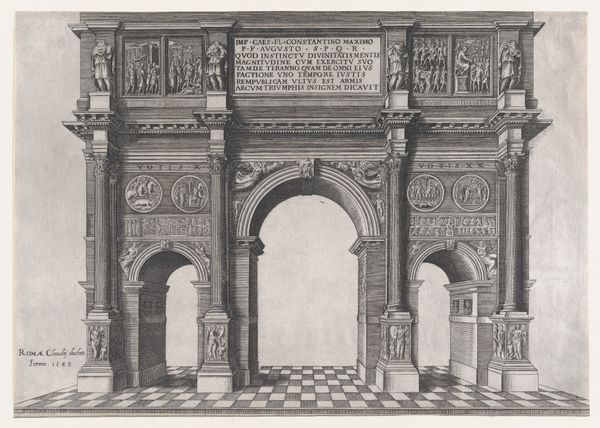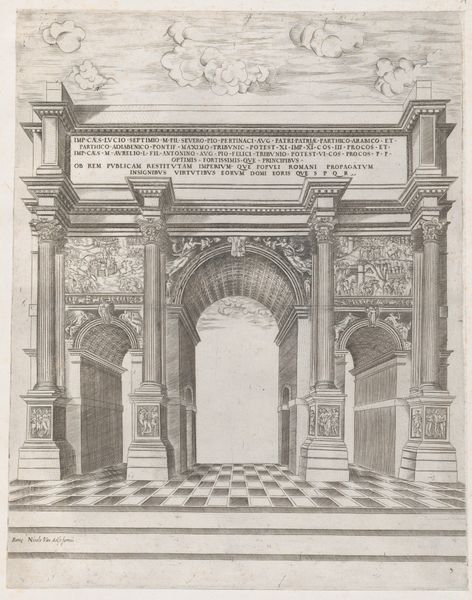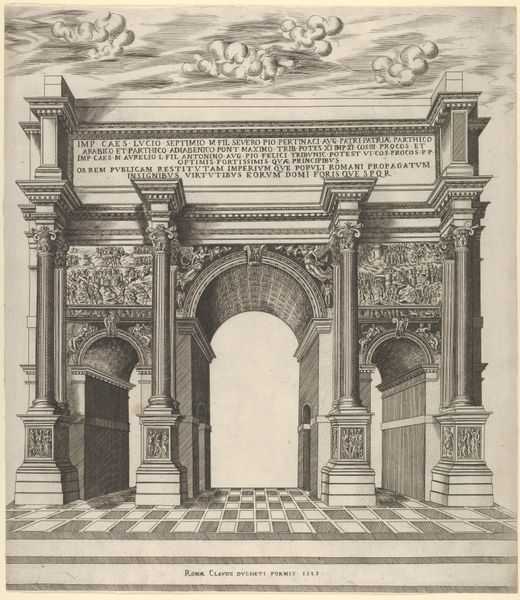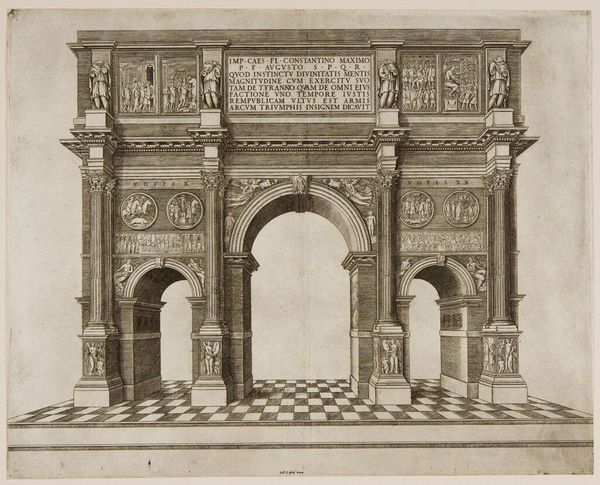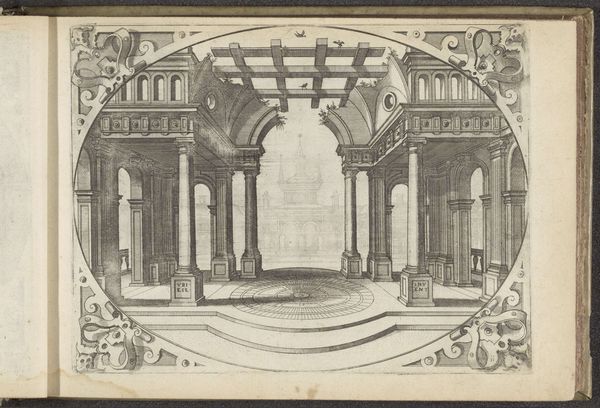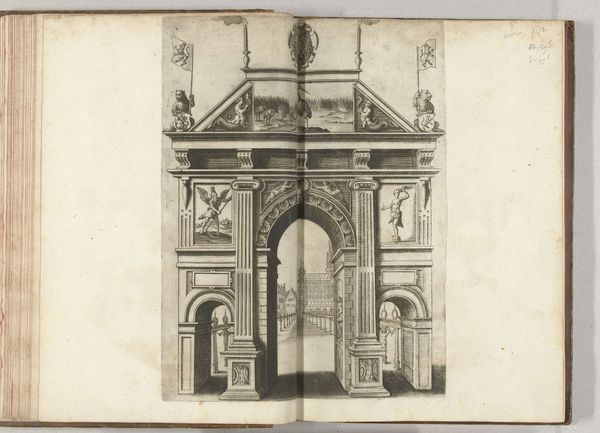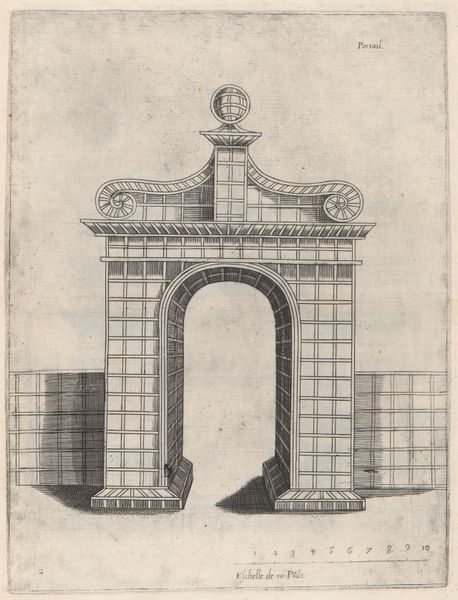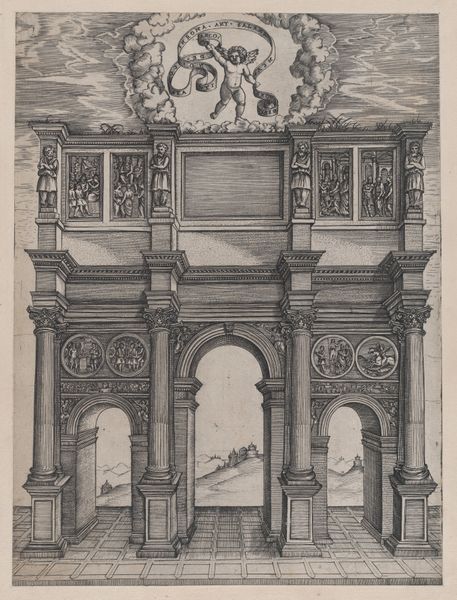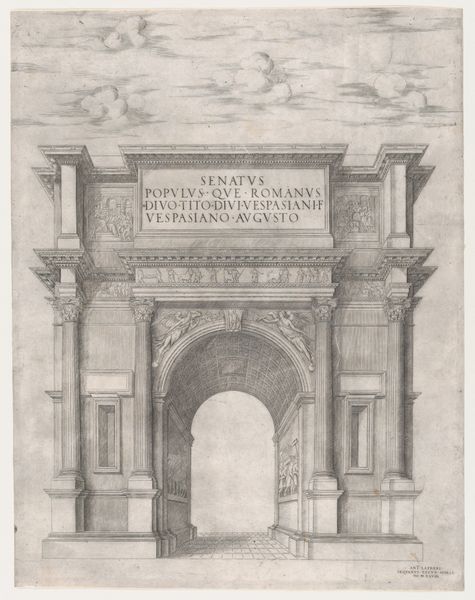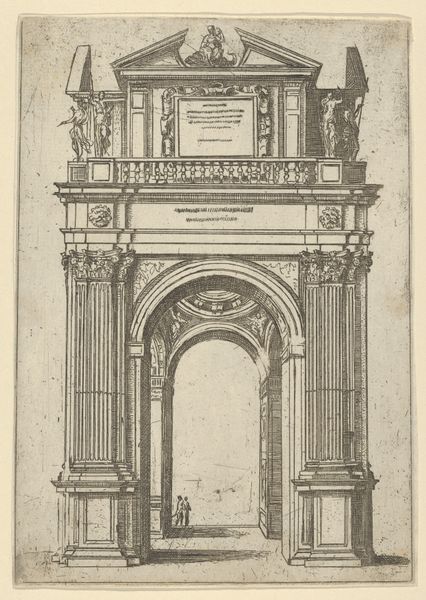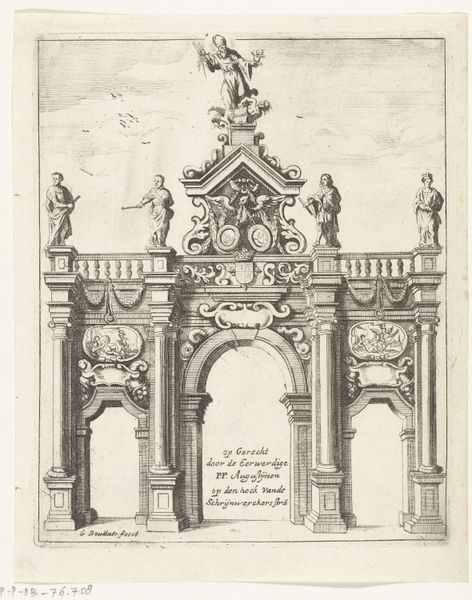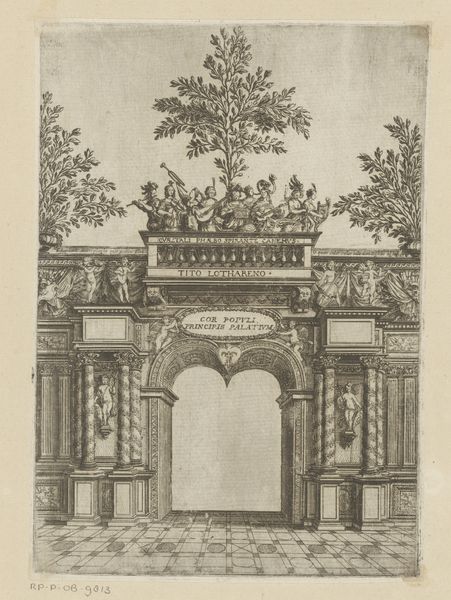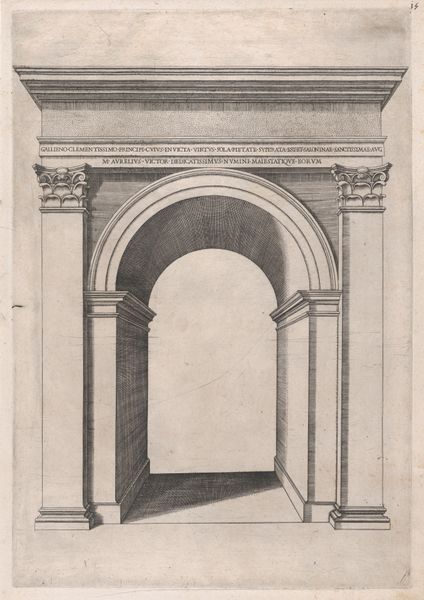
Speculum Romanae Magnificentiae: Arch of Constantine 1530 - 1580
0:00
0:00
drawing, print, architecture
#
drawing
# print
#
geometric
#
arch
#
geometric-abstraction
#
history-painting
#
architecture
Dimensions: sheet: 13 1/2 x 16 3/4 in. (34.3 x 42.5 cm) mount: 14 5/8 x 16 3/4 in. (37.1 x 42.5 cm)
Copyright: Public Domain
Editor: Here we have "Speculum Romanae Magnificentiae: Arch of Constantine," made sometime between 1530 and 1580 by an anonymous artist. It's a drawing and print depicting, as the title suggests, the Arch of Constantine. I'm struck by its rigidity and geometric nature. How do you interpret this work, especially considering its historical context? Curator: Well, consider the power dynamics at play. The Arch itself, built by the Roman Senate, appropriates imagery from earlier emperors. This print, then, becomes another layer of appropriation, of Rome's imperial past. Ask yourself: who is this image really serving? What does it mean to reproduce and circulate these images during the Renaissance? Editor: So, you're suggesting the print isn't just a neutral depiction, but a statement about power and legitimacy? Is there also perhaps something about claiming authority through geometry? Curator: Exactly. Geometric forms are associated with order, rationality, and even divine law. By emphasizing the geometric structure, the artist is reinforcing the Roman Empire's claim to these qualities, while simultaneously linking these perceived virtues to those who would have the privilege to possess this printed image. Think about the intended audience for this image, a patron perhaps eager to reinforce their cultural authority. What narratives does this reproduction support or silence? Editor: That’s fascinating. I hadn't considered the print as an active participant in power dynamics. So much more than just a rendering of the Arch itself! Curator: Precisely! By examining the social and political context of its creation and circulation, we can unveil the complex meanings embedded within seemingly straightforward architectural representations. Now, does that shift your understanding? Editor: It completely does! Thank you for illuminating the power structures behind the image. Curator: It’s crucial to keep these contextual narratives in mind so we may engage with art more thoughtfully.
Comments
No comments
Be the first to comment and join the conversation on the ultimate creative platform.
